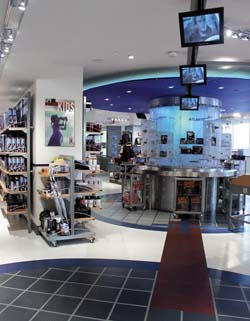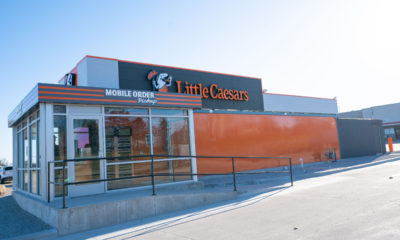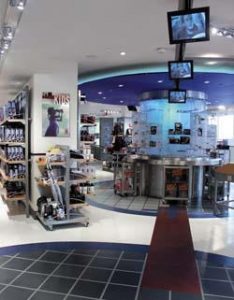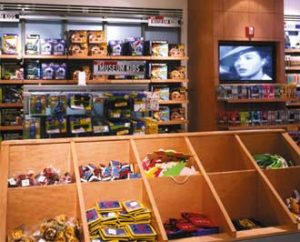Visitors to the International Spy Museum in Washington, D.C., are immersed in a series of interactive exhibits that let them adopt a cover, break codes, identify disguised spies and become the subjects of covert surveillance. That emphasis on interactivity carries over into the 5000-square-foot museum store, which FRCH Design Worldwide (Cincinnati) created in conjunction with the museum's advisory board and its team of architecture and design firms.
FRCH's mission – which it chose to accept – was “to extend the museum experience into the store, so visitors could interact with the merchandise, satisfy their curiosity and outfit themselves for a personal spy mission,” says Steve McGowan, vp/creative director.
The interactive experience continues in the transition area between the museum and the store, where visitors are recorded by a hidden camera. Those images are then displayed on video monitors at the store's entrance. Similarly, visitors to the restaurant adjacent to the store can spy on shoppers through a series of hidden portals.
“We created opportunities for people to see and be seen without knowing it,” explains McGowan. “In keeping with the way the undercover world operates, we wanted there to be surprises around every corner.”
That idea is reflected in a variety of graphic elements throughout the space. For instance, a video screen shows images of master-of-disguise CIA agent Tony Mendez transforming his appearance through time-lapse photography.
Advertisement
The store's merchandise also reflects the everything-is-not-what-it-seems theme. Shoppers can buy lipstick pens (modeled after the KGB's infamous lipstick gun), disguise kits, invisible inks and hidden-camera neckties. Those goods are housed in a series of themed shops, including the Spy Library, Spy Disguises, Spy Collectibles and Spy Hollywood.
“The merchandise is offered up in vignettes that mirror the museum's presentation of the tradecraft and history of espionage, as well as popular interpretations of the profession,” says Paul Lechleiter, FRCH's principal-in-charge/chief creative officer.
Client: International Spy Museum, Washington, D.C. – Milton Maltz, chairman and founder; Mike Devine, cfo; Dennis Barrie, president; Kathy Coakley, vp
Design: FRCH Design Worldwide, Cincinnati – Paul Lechleiter, principal-in-charge/chief creative officer; Steve McGowan, vp/creative director; Jay Kratz, design architect; Janet Wernke, project director; Mari Miura, Scott Rink, designers; Aaron Ruef, graphic designer; Jeff Waggoner, graphic design director; Brian Sullivan, construction documentation; Lori Kolthoff, Christie Kratzer, directors, color and materials
General Contractor: James G. Davis Construction, Washington, D.C.
Outside Design Consultants: Gallagher & Associates, Baltimore (museum design); Mark G. Anderson Consultants, Washington, D.C. (project management); Edwards Technologies Inc., El Segundo, Calif. (audio/visual design); Northern Light Productions, Boston (film and video design); Lighting Management Inc., New City, N.Y. (lighting); J.G. Stanley & Co., New York (retail product consultant)
Advertisement
Architect: SmithGroup, Washington, D.C.


 Headlines1 week ago
Headlines1 week ago
 Headlines1 week ago
Headlines1 week ago
 Headlines1 week ago
Headlines1 week ago
 Designer Dozen2 weeks ago
Designer Dozen2 weeks ago
 Headlines6 days ago
Headlines6 days ago
 Headlines2 weeks ago
Headlines2 weeks ago
 Designer Dozen6 days ago
Designer Dozen6 days ago

















